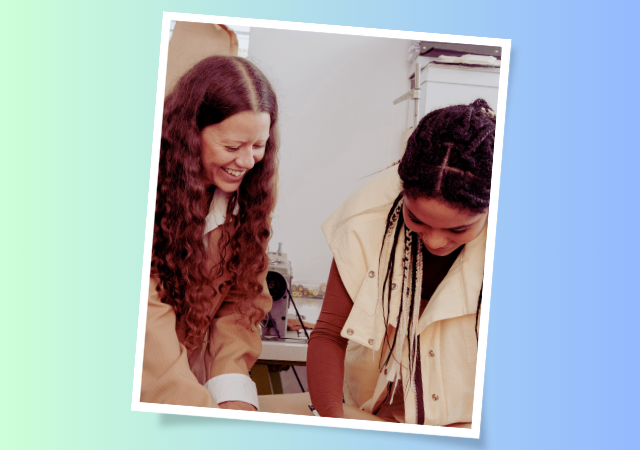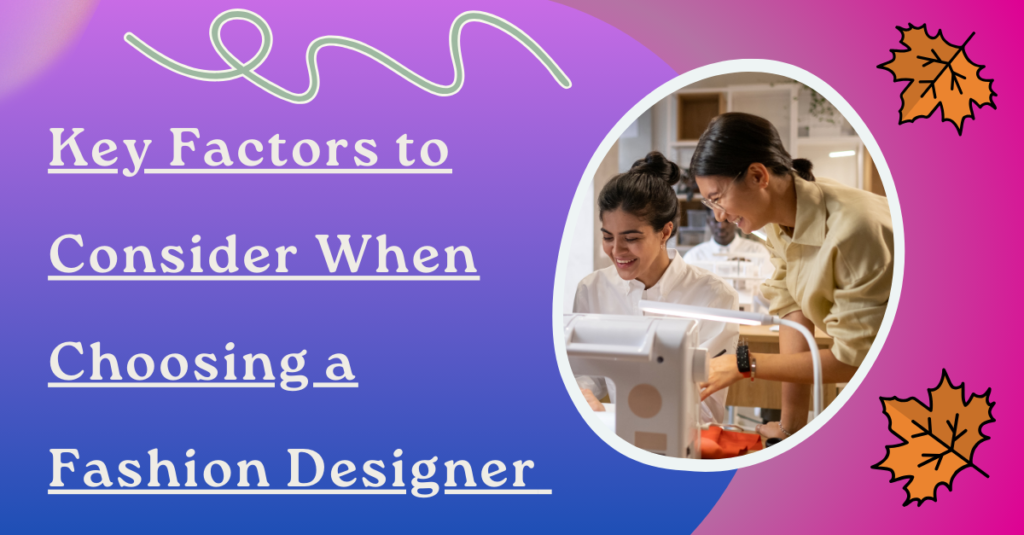Key Factors to Consider When Choosing a Fashion Designer
Introduction
Choosing the right fashion designer is a pivotal decision that significantly influences personal style and brand identity. In a world where individual expression through clothing is paramount, understanding the key factors in selecting a fashion designer is crucial. This article delves into the essential considerations when embarking on this creative partnership. From aligning personal style preferences and assessing portfolios to evaluating budget constraints and ethical practices, each factor plays a pivotal role in making an informed decision.
We explore the intricate balance of technical expertise, collaborative compatibility, and the designer’s reputation, guiding readers through the intricate process of finding a designer who not only meets their aesthetic aspirations but also aligns with their values. Join us as we unravel the key elements that empower individuals to make a confident and well-informed choice when entrusting their sartorial vision to a fashion designer.
Key Factors to Consider When Choosing a Fashion Designer
I. Personal Style and Preferences
Understanding your personal style is the cornerstone of the selection process. Begin by introspecting your fashion preferences, considering elements like color palette, silhouette, and overall aesthetic. A successful collaboration with a fashion designer starts with finding one whose design philosophy aligns seamlessly with your style preferences. Whether you gravitate towards minimalist elegance or bold avant-garde designs, this alignment sets the foundation for a fruitful creative partnership.
II. Budget Considerations

Establishing a realistic budget is imperative when choosing a fashion designer. Consider the cost structure of different designers and find a balance between quality and affordability. While high-end designers may offer unparalleled craftsmanship, emerging talents can provide innovative designs at a more accessible price point. It’s crucial to define your budget early on and communicate openly with potential designers to ensure a mutual understanding of financial expectations.
III. Portfolio Assessment
A designer’s portfolio is a visual testament to their skill, creativity, and versatility. Thoroughly analyze past work to gauge the consistency and diversity of their designs. Look for evidence of innovation and craftsmanship that resonates with your vision. A comprehensive review of their portfolio provides insights into their design evolution, helping you ascertain if their style aligns with your aesthetic preferences.
IV. Reputation and Reviews
Researching a designer’s reputation in the fashion industry is essential. Seek out client reviews and testimonials to gain firsthand insights into their professionalism, reliability, and ability to meet client expectations. A designer with a positive track record not only instills confidence but also indicates their commitment to delivering exceptional results. Consider their standing in the industry, awards, and collaborations, as these factors contribute to a designer’s credibility.
V. Collaborative Compatibility

Effective communication and collaborative compatibility are paramount for a successful designer-client relationship. Assess the designer’s communication style, openness to feedback, and willingness to incorporate your input. A harmonious collaboration ensures that your vision is understood and translated into the final design. Look for a designer who values client input and sees the collaboration as a partnership rather than a one-sided endeavor.
VI. Sustainability and Ethical Practices
As the fashion industry increasingly focuses on sustainability, it’s crucial to choose a designer who shares your values. Investigate their commitment to ethical practices in design and production. Consider factors such as the use of eco-friendly materials, fair labor practices, and waste reduction initiatives. Aligning with a designer who prioritizes sustainability not only contributes to positive environmental practices but also reflects a commitment to responsible fashion.
VII. Technical Expertise
Assessing a designer’s technical skills and craftsmanship is fundamental. Examine the quality of their workmanship, attention to detail, and proficiency in using different materials and construction techniques. A designer with strong technical expertise can bring your vision to life with precision, ensuring that the final product meets both aesthetic and functional requirements.
VIII. Availability and Timelines
Discussing the designer’s availability for your project and establishing realistic timelines is essential. Ensure that the designer can dedicate sufficient time to understand your vision and deliver results within your desired timeframe. Clear communication regarding milestones and deadlines is crucial for a smooth and timely execution of the design process.
IX. Contract and Legal Considerations
Drafting a clear and comprehensive contract is a vital step in protecting both parties involved. Define payment terms, delivery expectations, and any specific conditions related to the project. A well-structured contract not only establishes expectations but also provides a legal framework to address potential issues that may arise during the collaboration.
Conclusion (Key Factors to Consider When Choosing a Fashion Designer)
In conclusion, selecting a fashion designer involves a meticulous evaluation of personal style, budget considerations, and the designer’s professional attributes. A successful partnership hinges on aligning aesthetic preferences, understanding budget constraints, and recognizing the designer’s technical prowess. Reputation, collaborative compatibility, and ethical practices further contribute to the decision-making process. By navigating the intricate balance of these key factors, individuals can confidently choose a fashion designer who not only meets their creative aspirations but also shares their values. This comprehensive approach ensures a harmonious collaboration, resulting in a sartorial vision brought to life with precision and style.

My name is Rohit Vagh and I’m a content writer specializing in fashion and lifestyle. I have three years of experience in this field and have written various articles. My writing style is creative and engaging, and I strive to create content that resonates with my readers. I have a deep passion for fashion and am constantly researching the latest trends and styles to make sure my readers are up to date. I’m excited to continue my career in blogging, and I’m always looking for new opportunities in the fashion and lifestyle space.





